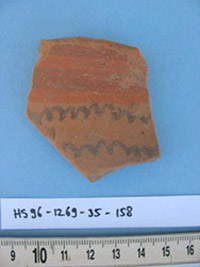
Halos
The town of Halos, located close to the Pagasitic Gulf near modern Almyros in Southern Thessaly, has a history going back at least to the Early Iron Age (10th century BC). The impressive present-day archaeological site, where the University of Groningen and the Greek Archaeological service have excavated since 1977, was probably founded around 302 BC, but already mostly deserted around 265 BC, presumably after an earthquake. In addition to the excavations in the Hellenistic city, which comprise houses, two city gates (one of which was reused as a large farm till at least ca. 220 BC), parts of the city wall and a small sanctuary, Greek and Dutch fieldwork also includes excavations in the extensive necropoleis around the city (Late Bronze Age-Hellenistic) and a survey of the surrounding Almyros and Sourpi plains, yielding finds from Neolithic to modern. The latter also covered the rather small pre-Hellenistic town, destroyed in 349 BC, and Medieval Almyros, then the major harbor of the area. Halos offers the unique opportunity for a comparative study of ceramic material from a town and its surroundings, including its cemeteries and the rural ‘hinterland’, over a long period involving drastic changes in its political, social, economical and geographical organization and settings. Both central questions of the New Perspectives on Ancient Pottery project thus find a perfect place here.

